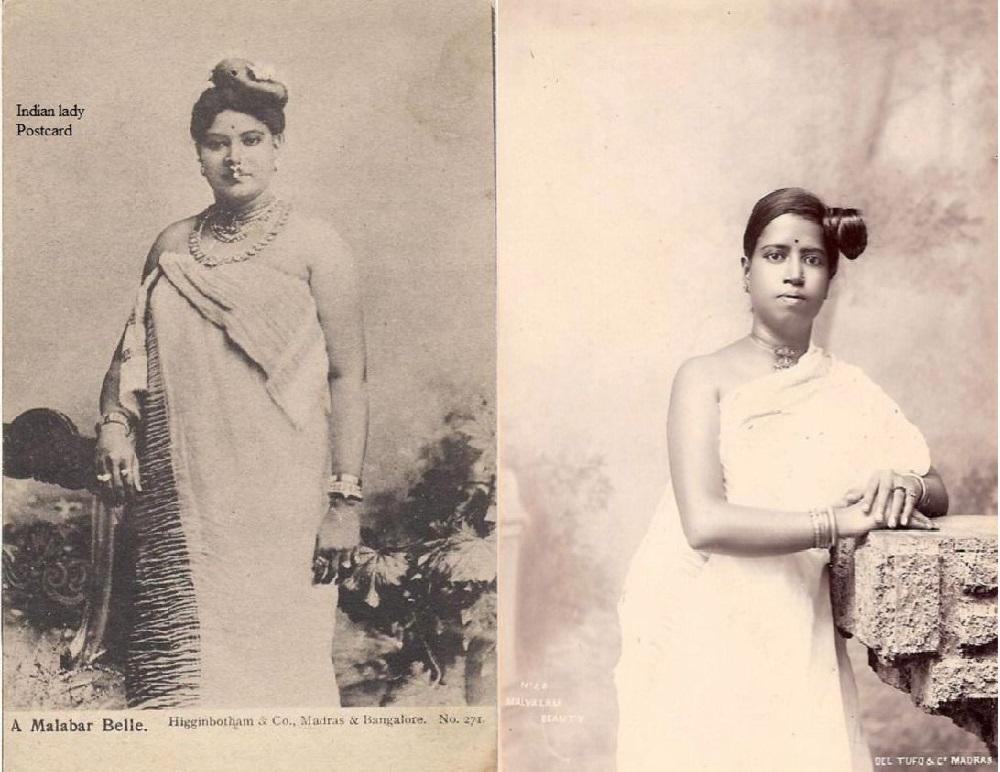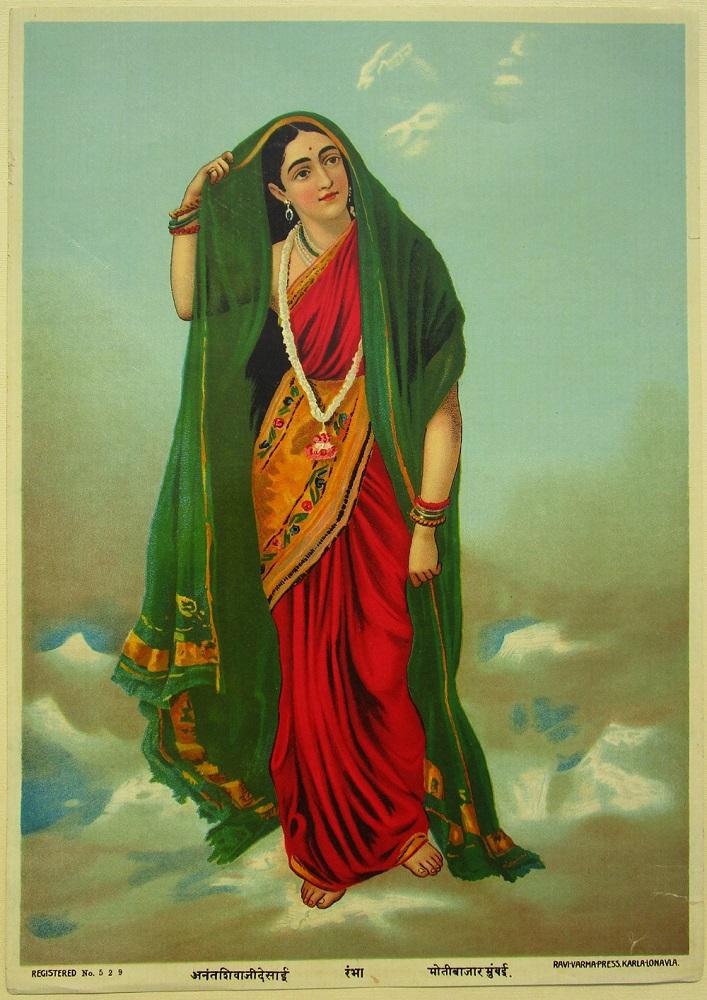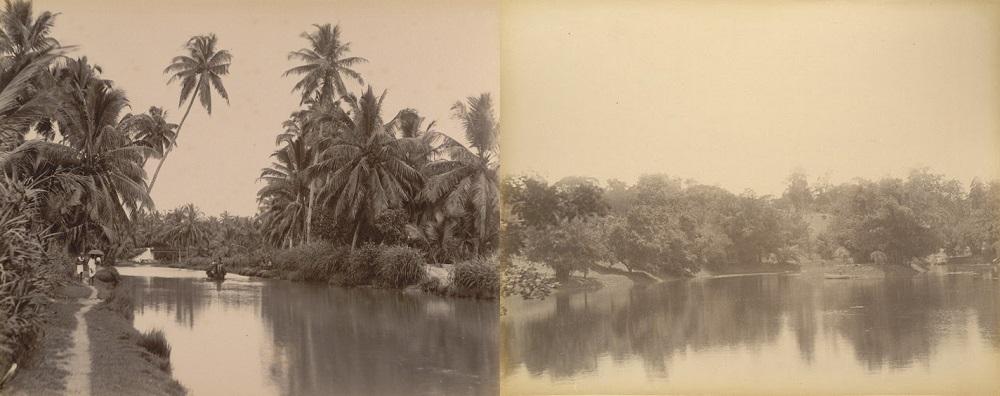“Unsteady Luminosity”: The Photograph in Modern Malayali Novels
For the Anglo-Indian community, as we saw in our earlier posts, the “lost original” symbolised a mythic search for a culturally homogenous identity that was not available. If we turn to Malayalam novels of the early twentieth-century, we will find the vision of a “lost original” transferred onto a slightly different social value. Literary theorist Udaya Kumar describes the complex figuration of photographs in the novels of modern, colonial Kerala in his book Writing the First Person, and this post is derived from it. He directs our attention to C.V. Raman Pillai’s Premamrtam (1913), for instance, where a young graduate called Ayyappan Thampi is presented with the photograph of a prospective bride by a go-between called Paniker. As he looks at it, he sees only an intense drama taking over the stage of his imagination; the photograph, in this frenzied moment, loses its definition. This passage is from Pillai’s novel:
“His fleshly vision clouded over. For the first time, the eyes of love that his inner body possessed became capable of sight… These eyes saw not a form created by the arrangement of light and shade, but the purity of a slender virgin leaning on a chair immersed in intense thought… Thampi felt that the heavenly beauty of divine virginity had appeared before his eyes draped in innocent piety and assuming a pure, sublime state of femininity.”

These were some of the ways in which women were photographed in late colonial Kerala. On the left panel, a postcard of Balamani, an early actor of the Keralan stage who attracted notoriety due to the difficulty she posed for those attempting to fix her image. She cast, as Manu S. Pillai writes, “a destructive, seductive spell" on those who saw her perform. (Left: A Malabar Belle. Kerala, Early 1900s. Photographic Postcard. Published by Higginbotham and Co. Right: Malayalam Beauty. Kerala, Early 1900s. Silver Gelatin Photograph. Published by Del Tufo and Co.)
Kumar reads the confusions and entanglements produced by the photograph to suggest:
“As he emerges from the spell… Thampi is convinced that the referent of the image could not be of this world; it could only be the replica of an ideal. But ideals are beyond the realm of photographs; could the photo then be of a painting which had conferred fleshly lineaments upon an ideal? Was this not in fact the photograph of a painting by Raja Ravi Varma?”
The photograph, unfortunately, refuses to remain a stable medium for communicating such ideal visions. Thampi soon sees another photograph of the same woman, this time presented in a decorous hall covered with erotic paintings of nymphs like Rambha and Menaka. It did not resemble the earlier image at all,
“If the second photograph is accurate, it is a certain elegant seductiveness (chetitvam) that is dominant in the woman whom he has come to visit… As it was a full-length portrait one could see the rare exuberance of her hair. If a girl who has such copious hair is ready to comb and hold it up before a photographer, thus displaying the taste of a seductress, her heart was untouched by the venerable trait of modesty, and she did not possess sufficient majesty to become spouse to the heir of Chambrangottu taravad… He put the photograph down on the table. Paniker’s hopes dimmed. He said: ‘Same girl in both pictures. You can see the very original if you wish.’”

Rambha, the Queen of Apsaras. (Raja Ravi Varma. Kerala, 1890. Lithographic Print of Painting. Ravi Varma Press, Karla-Lonavla. Image courtesy of Wikimedia Commons.)
As if to make things worse, when the “original” woman finally appears in flesh, Thampi is forced to conclude “…that this face was not familiar to him through either of the photographs he had seen. Radiant like the full moon, on that face played the childlike purity as well as traces of frivolity…” Almost like an eccentric mixture of essences, producing a third, new thing altogether.
With the first image, the visual imagination is clouded over by its own masculine drama of and longing for essential purity. In the second, more ordered studio photograph, this drama breaks up. The condition (and conventions) of the photographic studio enters the image and disenchants the imaginative engagement of Thampi. It simply becomes, for him, about reconstructing the scene in the studio and making “inferences” that he finds to be unsavoury. With the final, real appearance of the woman, however, elements of the drama and its confusions begin to return again—leaving Thampi even more uncertain about the “true” nature of this woman.

These photographs are from an “Album of South Indian Views” made by Zacharias D’Cruz, who was an official government photographer (c. 1900). These images ranged typically from views of the lush country to the ordered, stately infrastructural interventions of the colonial government such as buildings and efficient, navigable canals. (Source: pazhayathu.blogspot)
It is not painting, venerated and stylised in the manner of Ravi Varma, which is an object of confusion. Rather it is the photograph—with its implication of a disruptive, bodily presence—that struggles to accommodate any ideal visions of wholeness or purity in the formative imagination of modern Malayali novelists like Pillai.
Accelerated by the establishment of the photographic studios in Travancore, these writers eagerly adapted to new technologies of vision that were being produced by Malabar’s colonial encounter. Even so, they rendered the effects on seeing the ordinary world more uncertain than the Victorian realists (writers and photographers) before them. For the latter, light was meant to clarify the space of realism in the image, making verisimilitude their objective. In Kerala, however, this “light and shade” produced an “unsteady luminosity” that could produce a slippery field of vision between fantasy and realism. This could, in its turn, allow for dangerous social transgressions. “Later in the novel,” as Kumar writes, “he (Thampi) becomes prey to a… misrecognition of the woman’s fidelity on account of an inadequate and misleading visual encounter.”
One gets the idea that these photographs, while attempting to capture the female “essence,” did far more ordinary work by refusing a stable semiological basis for the same.
In case you missed the earlier posts on literature and Anglo-Indian photography, please search for "Chronicle or History? Looking at Anglo-Indian Photography" in the Stories section and "New Practices of Narration: Looking at Anglo-Indian Photographs" in the Albums section.




